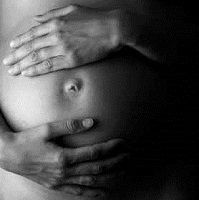Pregnancy: More than 3 Increases Atherosclerosis Risk
Women who have 4 or more children have a higher risk of developing atherosclerosis, a Texas study found. Researchers who analyzed data on coronary artery calcium and aortic wall thickness found these 2 cardiac risk factors were most pronounced in that high-birth group and far lower in women who had 2 or 3 children. Curiously, women who had 1 or no children also showed they had the risk factors similar to the high-birth group.

Women who give birth to 4 or more children are more likely to incur cardiovascular risk factors later in life , a UT Southwestern Medical Center research team has found.
Writing in the European Journal of Preventive Cardiology, Monika Sanghavi, MD and colleagues in Dallas, TX reported on their analysis of data from the Dallas Heart Study. That study was of 1,644 women, a multi-ethnic group ages 30 to 65.
The team traced the subjects’ history of live births and compared those with subjects’ levels of coronary artery calcium (CAC) and aortic wall thickness (AWT). Those were measured by CT scans and MRIs, respectively.
They found that the levels of CAC and measures of AWT, both seen as cardiac risk factors were highest in women who had gone through 4 or more births, lowest in women who had been through 2 or 3 births, and slightly higher in women with no children or one child.
Compared to women who had 2 or 3 children, the odds ratio of having CAC for women with the most children was 2.2 and for AWT it was 1.4.
In the women with 1 or no children, the odds ratio for CAC was 1.9 and for AWT it was 1.5. compared to the middle (2 or 3 children) group.
“The number of live births is associated with subclinical coronary and aortic atherosclerosis,” the team concluded.
Pregnancy has been considered a proartherogenic state because of weight gain, insulin resistance and dyslipidemia, they wrote. “Some changes such as a decrease in HDL and increased visceral adiposity persist,” after childbirth, suggesting pregnancy has an impact long after it is over. Multiple pregnancies means women are exposed to these potentially risky factors longer.
Abdominal fat is known to carry an increased risk of hypertension, diabetes, and early atherosclerosis.
They were uncertain why the women with 1 or no children also had higher odds of developing the cardiac risk factors.
Perhaps they had few pregnancies because of other health problems--conditions that independently come with cardiac risk factors. Infertility might be a sign of such medical conditions.
“Our survey instrument did not differentiate between those who had never attempted pregnancy versus those who were unable to conceive,” they wrote.
Or maybe pregnancy itself initially protects women from atherosclerosis so these women did not get as much of that protection as women who had 2 or 3 childrn.
The implication for clinicians is that when trying to assess cardiac risk they should include the woman’s childbirth history.